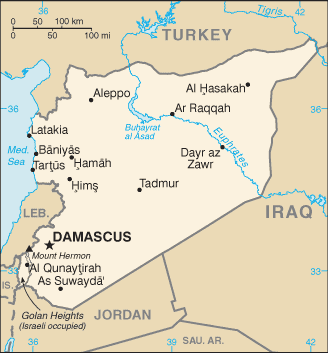Top US commander in Iraq Lt. Gen. Stephen Townsend dismissed the idea that the current plans for US escalation in Iraq and Syria would result in the deployment of “large numbers” of additional US combat troops. He refused to say what his recommendation was, but insisted that the current troops levels are “working” and that he didn’t see a need for large additional deployments.
 Earlier this week, the Pentagon delivered a series of “options” all designed around the idea of rapidly defeating ISIS. The plans were not made public, but reportedly included plans for thousands of additional combat troops to be sent to Syria as part of the operation.
Earlier this week, the Pentagon delivered a series of “options” all designed around the idea of rapidly defeating ISIS. The plans were not made public, but reportedly included plans for thousands of additional combat troops to be sent to Syria as part of the operation.
It is unclear whether Townsend is disputing this plan, or simply doesn’t consider thousands of troops in Syria to be a “large number” in the grand scheme of things. The US currently has around 300 troops in Syria, and in Iraq the deployments are officially around 5,000, and unofficially around 6,000.
The plans are also expected to see a significant increase in US military aid to the Syrian Kurdish faction the YPG. Turkey has objected to the idea, but Townsend reiterated today that the assault of the ISIS capital of Raqqa would involve Kurdish fighters.
While the momentum in Iraq is decidedly against ISIS, in Syria the group still holds a large amount of territory, and several months into the US-announced assault of Raqqa, Kurdish forces have only managed to “surround” the northern part of the city, which is likely the source of President Trump’s call for plans for “rapid” defeat of ISIS, and also that this involves greatly increasing the number of US troops in Syria.
Townsend may ultimately be right about Iraq itself, with little apparent need for additional US deployments there right now, but it’s hard to imagine that President Trump’s promised escalations aren’t going to involve a showy deployment of combat troops into the region, likely in Syria, to try to get some quick results.
This is doubly true with Trump planning to establish “safe zones” in Syria, something the Pentagon has long warned would require a substantial number of US troops to defend. Though details on the form the safe zones will take is uncertain, this too points to large deployments in Syria being likely.


